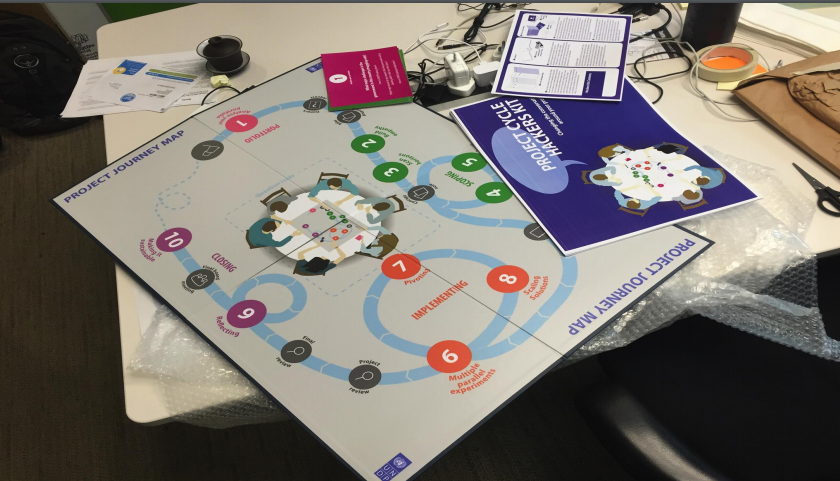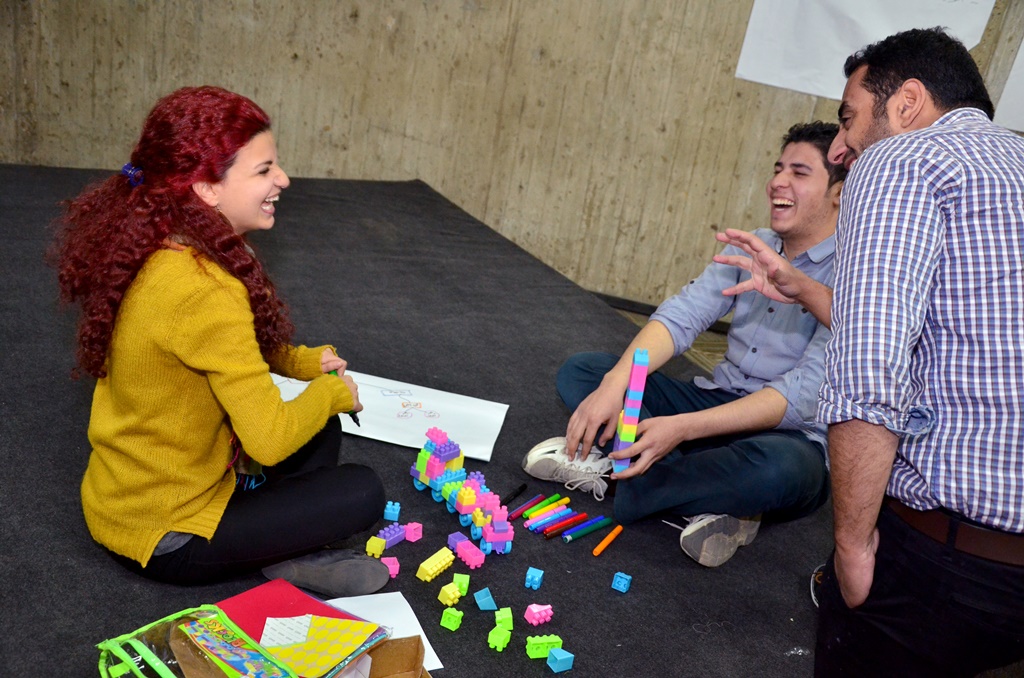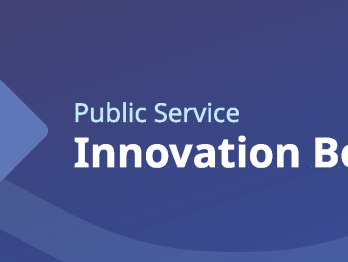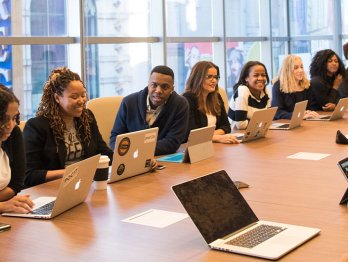Creating a new norm: moving innovation from the margins to the mainstream

This blog was authored by guest blogger, Benjamin Kumpf Policy Specialist, Innovation, United Nations Development Programme
“We are trying to prove ourselves wrong as quickly as possible, because only in that way can we make progress.” Richard Feynman, Noble Prize winning physicist, emphasized this paradigm as guiding principle for work in natural sciences. Based on what we have learned over the last three years in the Innovation Facility in the United Nations Development Programme (UNDP), we argue that such a paradigm is not only applicable to policy-making and public sector innovation – it is needed.
Moving from ‘making the data fit the theory’ to ‘adjusting the theory to the data’, or in another words, an experimental approach that does not fetishize failure, is at the heart of successful public sector innovation.
UNDP is among the growing number of international development organizations that invests in innovation. The journey started in Eastern Europe and Central Asia in 2012 and matured to a global Innovation Facility. This Facility is essentially a small startup within a large bureaucracy and as every start-up it comes with a value and growth hypothesis: by bringing in new ways of working and testing new models, better development outcomes will be achieved. That is the value hypothesis and the core of our work: focus on the change you want to achieve, not the solution.

The growth hypothesis is that testing and scaling new approaches will result in new service lines for the organization. Indeed, independent evaluations show that UNDP Country Offices that have successfully adopted innovation principles designed new services, embedded cutting-edge skills into their own teams and those of their clients, and mobilized new streams of funding for human development. UNDP remains one of the few UN agencies that supports governments in setting up Public Sector Innovation Labs to experiment with new approaches to policy-making and that advises government partners on designing Open Innovation Prize Challenges.
In addition to scanning the horizon for promising models and emerging technologies that have the potential to improve policy-making and service delivery, the Innovation Facility has a change management mandate, comparable with many Government Labs that also aim at updating the modus operandi of their respective public sector.
Making innovation the new normal requires a variety of interventions. We drive innovation through a decentralised fund with support from the Governments of Denmark and the Slovak Republic, and UNDP’s own funds. The investments in more than 130 experiments since 2014 have resulted in better development solutions and new service lines. Our report, ‘Innovation for 2030’, presents our innovations that are scaling along with the early-stage initiatives.

To drive innovation, we developed our own innovation framework and endorsed it with senior management support. We work with our Talent Management Team on providing managers with support to enable innovation. The UNDP Leadership Development Pathway entails a pillar on innovation and provided more than 500 managers in the organisation with skills in human-centred design and social innovation. We drive innovation by providing tools that help colleagues and partners in their endeavors to change business as usual. Examples include the DIY Toolkit produced by our partner Nesta, the Toolkit for Troublemakers and others. We launched Innovation Champion programmes in four regions, deliberately with distinct designs to assess their comparative advantage.
Yet, innovation remains on the margins of the organization. It is driven by the passionate, curious ones who are not satisfied with how business is done. The tools and support mechanisms developed by the Innovation Facility and its partners are helpful for those who are willing to go extra miles and work outside of the system but they will not establish a new norm.
We have realized that our innovation framework is too distant from how people in the organization operate. More needs to be done. Here are the pillars of our next experimentation phase to bring innovation to the core how ‘things are done around here’.
1. Embed in innovation in project management procedures
Public sector organizations like UNDP usually have strict rules on how business is done. This is a core strength for any organization that strives for transparency and accountability. The downsides, however, are inflexible multi-year planning instruments, risk aversion, and in some cases concepts of scale that prioritize standardization over adaptation.
Our team in the UNDP Regional Istanbul Hub led the design of tools that help colleagues deviate from the current linear implementation paradigm, offering new ways to work at any stage of a programme or project cycle, and design for adaptive scale from the get-go.
Our key assumption is that if methods that enable experimentation are part of the organization’s DNA, we will see an uptake in their use and eventually produce better programmes and projects. So we ‘hacked’ the corporate programme guidance and developed the ‘Project Hacker Kit’, working closely with four UNDP Country Offices over months.
The ‘Hacker’s Kit’ does not offer quick solutions but rather helps managers and practitioners ask tough and useful questions. Are there positive changes already happening in the system? Can we identify positive deviants? What are probable future scenarios and challenges for the system? How can we reformulate activities to a set of assumptions and hypotheses and test them? How can we design solutions with end users? Have we tested different models to make a strong business case before going into piloting? The Hacker’s Kit strives to find a balance between making systems-thinking practical and designing evidence-based experiments that inform the next steps of a programme.
We developed a physical asset, a deck that looks like a board game with question cards, to initiate more stimulating conversations. Having something to engage with has so far proven to kickstart more engaged conversation than discussions without our ‘board game’.
2. Invest in skills-building
Just like national public sector organizations, international organizations will have to transform largely with the staff they have on board. Bringing in new talent with innovation skills will not suffice. Fostering innovation skills in the public sector thus becomes a fundamental for UN agencies and UN Member States alike. But what are the most important skills to nurture? What are most cost-effective ways to ensure that a relevant number of staff members have the required skills and capabilities?
To answer the first question, we partnered with Nesta and investigated how successful innovation champions within UNDP trigger and manage change. Based on the observations of the positive outliers and ongoing work of Nesta and the OECD Observatory for Public Sector Innovation we identified four core functions:
- Opportunity: How to identify new and promising ways of working?
- Challenge: How to productively challenge the status quo?
- Inspiration: How to inspire colleagues and management to make a shift?
- Diagnosis: How to work with teams to identify the most suitable entry points for innovation?
The required skills to successfully execute these functions are data literacy, the ability to manage iterative processes and user centricity. The opportunity function means to develop the skills required to scan the horizon for promising new ways off solving problems.
How to best build and nurture these skills? We do not have a master plan but rather an optimistic hypothesis: if the organization invests heavily in hands-on learning opportunities for staff and mangers over the next four years, then the investments in a dedicated innovation team will no longer be required. If the next iteration of UNDP’s Strategic Plan dedicates resources and political will to build skills that can respond to this VUCA world, the UNDP offices of 2021 will have strong iteration and horizon scanning capacities.
In Asia-Pacific, we are testing an intervention to further develop these four core skills. In 2015 we launched the “Innovation Ambassadors” programme, appointing colleagues from 14 countries as ambassadors. They have all pushed innovation in their Country Offices over the last two years by testing new ideas and technologies, creating new partnerships and managed to inspire other colleagues to take up innovative approaches.
We brought these ambassadors together for one week with our innovation leads and partners from Nesta to learn the fundamentals of social innovation, and how to conduct portfolio scans of programmes and advise colleagues on innovation. The last two days were hands-on, enabling the ambassadors to work with programme teams from the UNDP Sri Lanka office on embedding innovation in new and ongoing programmes across all thematic areas. By undertaking horizon scans and practicing the inspiration function as well as diagnosis skills, together with experts who gave immediate feedback, our champions were able to learn by doing.
Currently we are designing other forms of capacity-building programmes to enable colleagues to use the Hacker Kit as a vehicle to strengthen their innovation skills and initiate new experiments.
Moving innovation to the core of an organization means making learning part of the brand. It means moving from an ‘answer delivery system’ to a ‘solutions generating system.’
Innovation as we approach it, means iterative design, based on early learning. “Rather than thinking of strategy as a single plan built on predictions of the future, we should think of strategy as a portfolio of experiments that competes and evolves over time” as Eric Beinhocker puts it.












